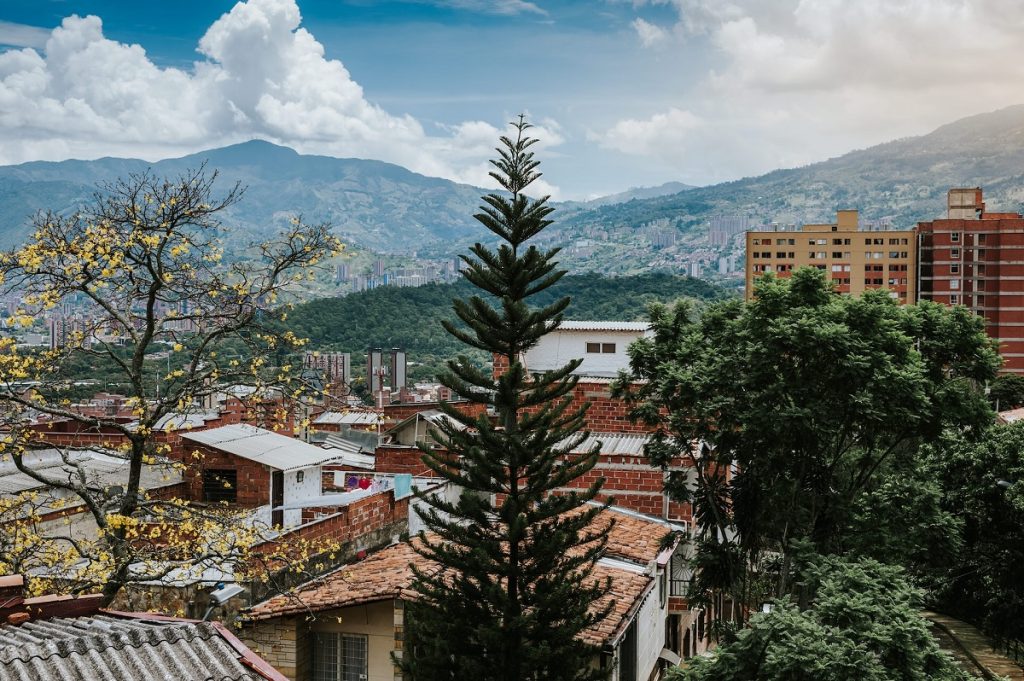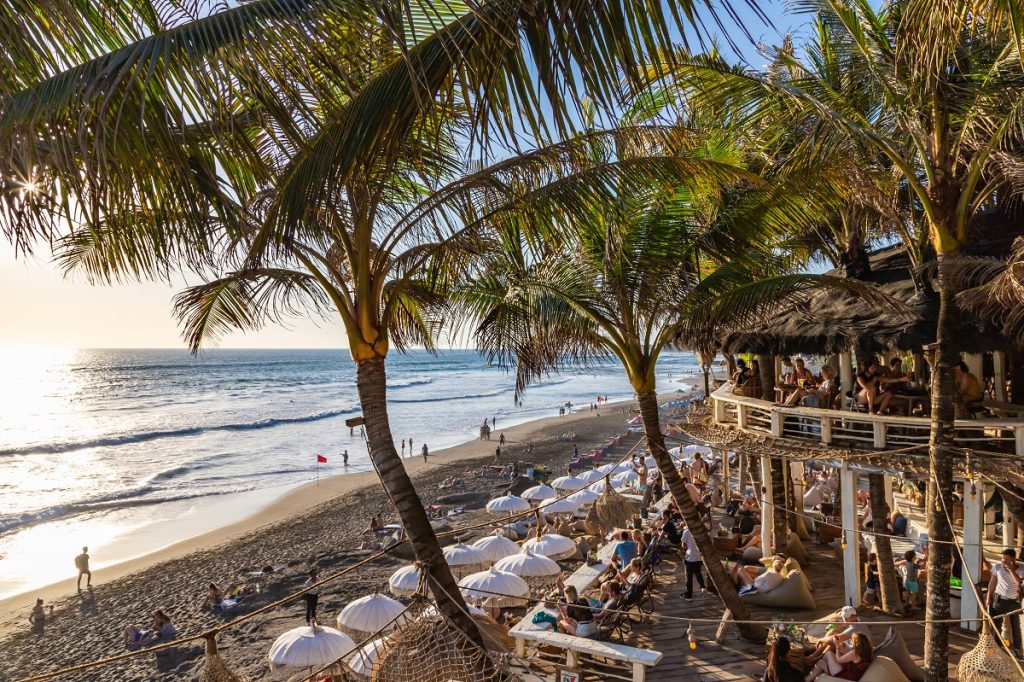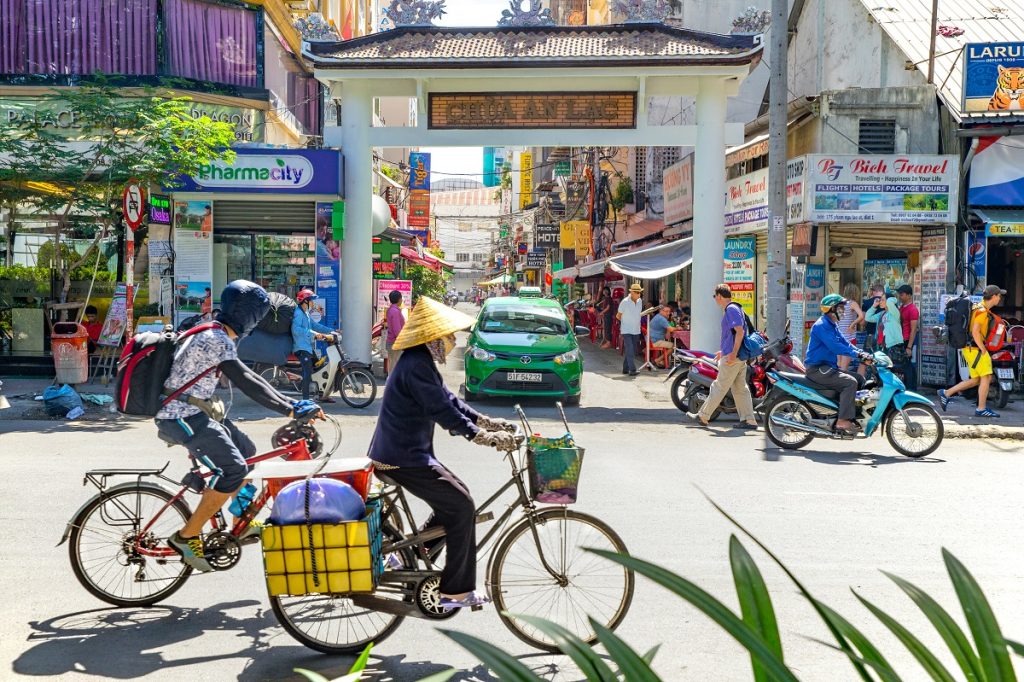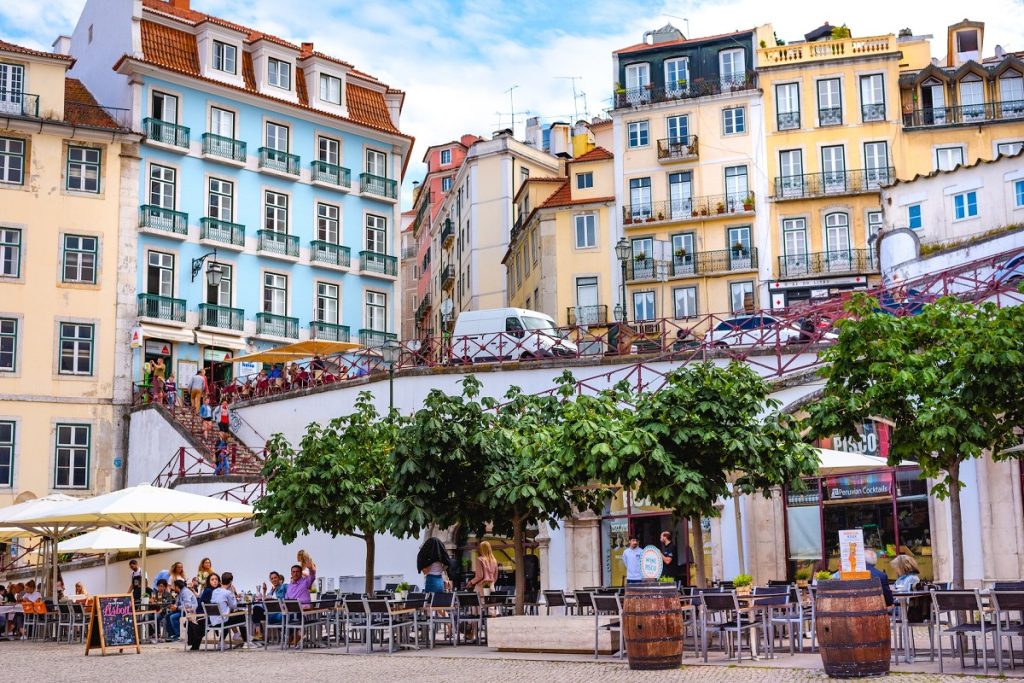As countries around the world welcome remote workers, some cities stand out as the most amenable for foreign workers. Factors such as reliable Wi-Fi, cheap cost of living, housing options, and safety make attractive areas even more appealing to digital nomads.
Working abroad has always had its appeal, but the Covid-19 pandemic changed the dynamic as an increasing number of younger workers set up shop in remote locations. Some countries that with an established digital nomad scene saw increases in the numbers of visitors as new locations joined the ranks of best digital nomad cities.
Many countries responded to the influx of tourists in troubled times by instituting digital nomad visas that clarified how expats could legally work in their country.
What are the most popular and welcoming digital nomad destinations worldwide? What factors should you consider when choosing the country and city to stay in as part of your digital nomad lifestyle?
Table of Contents
Why Are Digital Nomads Becoming More Common?
The digital nomad community has been around for a long time (at least since the 90s), but nowadays, more and more people want the flexibility that comes with the lifestyle and the chance to travel all over the world.
As the pandemic prompted companies to allow remote working globally, the ability to choose your work location has become another crucial aspect of so many people’s lives. According to remote work benefit statistics, the top one is the flexibility in choosing how to spend your time (67%). The ability to work from anywhere is the second most important benefit of working remotely (62%).

Both of those lead to better work-life balance, which in turn enhances focus during work hours. Other reasons people decide to become digital nomads include:
- No or less commuting
- The ability to choose where you want to live
- Affordability
- Safety
- More career opportunities
The nomadic life appeals not only to remote employees, but also freelancers, entrepreneurs, and startup owners. Therefore, people from all walks of life often become digital nomads.
Prior to the pandemic, those who traveled abroad to work were primarily older workers from the boomer (27%) and Gen X (24%) groups. In 2020. when digital nomading increased by 49% from 2019 to 2020, Gen Z and Millennials accounted for 61%, Gen X dropped to 22% and Boomers dropped to 17%. Presumably, this shift reflected the heightened concern of older workers about contracting Covid.


Where Are Most Digital Nomads From?
The main nationality of digital nomads worldwide is American (52%). Statistics further show the UK in second place with 8%, and Russia in third with 5%. Canadian digital nomads amount for 4%. Next are Germany and France with 3%. Other countries have less than 3% of digital nomads.
What Is The Best Country For Digital Nomads?
There is no one-size-fits-all when it comes to the best country for digital nomads. Some people care about a mild climate year-round and may choose the country with smaller, laid-back towns. For others, an active nightlife scene, delicious street food, and proximity to national parks are more important, so they want a big city country.
Many digital nomads love to stay in European countries — Portugal, Spain, France, or Malta. Others prefer Southeast Asia — Indonesia, Thailand, or Vietnam.
What Are The Most Popular Destinations For Digital Nomads?
The top 12 digital nomad cities are:
- Lisbon, Portugal
- Barcelona, Spain
- Budapest, Hungary
- Santa Teresa, Costa Rica
- Buenos Aires, Argentina
- Medellín, Colombia
- Mexico City, Mexico
- Chiang Mai, Thailand
- Bangkok, Thailand
- Canggu, Bali, Indonesia
- Ho Chi Minh City, Vietnam

What Makes A Destination Popular For Digital Nomads Besides The Area?
An average digital nomad typically has a list of considerations a tourist doesn’t need to worry about. The most important things to think about include:
- Ease of entering the countries
- Housing
- Wi-Fi
- Safety
- Quality of life versus the cost of living
It’s worth noting that all of these points vary by country and individual. In general, countries that have designated digital nomad visas are easier to get into for business purposes, although some allow remote working on tourist or other short-stay visas.
All digital nomads need a solid, clean place to stay, in a safe neighborhood, with a reliable internet connection, but for someone working part-time and looking for fun experiences, the speed of Wi-Fi may not be the top priority. Similarly, affordability may play a big part for low-income remote workers or startups, but not as much for established entrepreneurs.
What Is The Average Digital Nomad Salary?
Digital nomad income statistics reveal that in 2022, 34% of digital nomads worldwide earned $50,000 to $100,000. 33% averaged from $100,000 to $250,000 annually, while 17% had $25,000 to $50,000 per year. 7% had less than $25,000, and 7% had more than $250,000. 2% earned over $1,000,000.
The numbers make it clear that most digital nomads are not carefree back-packers but those with solid careers in place. As many countries put high monthly incomes in their requirements for digital noman visa seekers, they make it clear they especially want to welcome more affluent working visitors.
How Can Digital Nomads Take Advantage Of A Low Cost Of Living?
To get the most out of your stay in a low-cost-of-living city, plan to travel there off-season, find cheap, safe housing, and eat local while avoiding overpriced restaurants. These tips can help you save more money for your next destination as well.
If you are going to a foreign country, you can make the most of the opportunity by sampling local cuisine rather than chain restaurants you can find at home. You’ll make memories without spending a lot.
Before heading off to remote-work in any location, it’s crucial to do your homework. The attractions and natural features may not change, but technology does, as does the cost of living. With many guides to digital nomad living on the internet, make sure to read several of them and check other sources so you get a clear picture of your projected costs.
Facebook and other social media platforms may have groups you can join to learn more about the digital nomad community in your destination of choice and get real-life opinions about costs, places to live, and much more.


What Accounts For Their Popularity As Best Digital Nomad Cities?
Popularity factors differ for top digital nomad cities, although some overlap when multiple cites are within one country.
You can find the comparison of our top 12 below:
1. Lisbon, Portugal
Besides the benefit of Portugal being one of the cheaper countries in Western Europe, its capital city has plenty of working spaces, cafés, and coffee shops with a stable, fast internet connection. Moreover, there are multiple digital nomad visa options to choose from. You can live and work in Portugal on a one-year digital nomad visa.
- Cost of living per month: $2,000
- Internet speed: 25 Mbps
- Best Co-working space: The Secret Garden
- Must see: St. George’s Castle and the Lisbon Oceanarium
2. Barcelona, Spain
The Spanish capital city offers a perfect balance of beaches, boutiques, and historic buildings on one side and coworking spaces, fast internet, and opportunities to meet like-minded people by attending meetups and various events on the other. Similarly to Portugal, Spain has recently introduced a 12-month digital nomad visa.
- Cost of living per month: $3,000
- Internet speed: 35 Mbps
- Best Co-working space: Betahaus
- Must see: Sagrada Familia and Park Güell.

3. Budapest, Hungary
Hungary has the White Card visa for digital nomads that also allows you to travel through the Schengen Area. The visa is valid for a year and extendable. The country is safe with good affordability, so you can enjoy staying in its beautiful capital without breaking the bank. Hungary has an extendable digital nomad visa, so you can enter and stay in the country for up to two years if you meet the requirements. However, you cannot bring your family members with you on the Hungarian White Card.
- Cost of living per month: $1,450
- Internet speed: 30-40 Mbps
- Best Co-working space: Loffice
- Must see: Budapest History Museum and Buda Castle
4. Santa Teresa, Costa Rica
If you prefer smaller beach towns surrounded by nature, you’ll love Santa Teresa. Internet speed is great, but the place is costly to live in. Also, keep in mind the roads are unpaved and there is no public transportation.
Like Hungary, Costa Rica has a 12-month digital nomad visa that can be renewed for another year. Cost of living per month in Santa Teresa is $3,000, internet speed up to 75 Mbps, and nearby tourist attractions include Tortuga Island and Montezuma. The best coworking space is SWINDA COWORK OFFICE.
- Cost of living per month: $3,000
- Internet speed: 75 Mbps
- Best Co-working space: Swinda Cowork Office
- Must see: Tortuga Island and Montezuma

5. Buenos Aires, Argentina
The low cost of living, a mix of cultures and cuisines, and an active nightlife attract digital nomads to this urban part of Latin America. Buenos Aires is said to be Argentina’s best city for remote working.
Argentina has a 180-day digital nomad visa with a possibility to extend it for 180 more.. As a digital nomad, you can request a welcome kit which includes discounts and other first-time perks upfront, and pick it up upon arrival.
- Cost of living per month: $950
- Internet speed: 19-26 Mbps
- Best Co-working space: Cespedes
- Must see: Plaza de Mayo and the President’s Pink House (Casa Rosada)
6. Medellín, Colombia
Medellín is the most popular digital nomad hotspot in South America. The city is known for its mild climate, great public transportation, high-quality restaurants and clubs, and interesting places like coffee farms. Locals are welcoming, and there is a two-year digital nomad visa, making the country one of the top digital nomad hub choices in this part of the world.
Colombia has a two-year digital nomad visa that is not hard to get.
- Cost of living per month: $1,000
- Internet speed: 5-15 Mbps
- Best Co-working space: Espacio
- Must see: Jardin Botanico (Botanical Garden) and Antioquia Museum

7. Mexico City, Mexico
The place is often called the New York City of Mexico. There are a lot of tourist attractions and delish foods to try. Mexico City is decently affordable, and the overall quality of life is great. Plus, Mexico City International Airport provides easy access to the US, Canada, and other countries via direct flights.
Mexico doesn’t offer digital nomad visas, but the alternatives are a temporary resident visa (Residente Temporal) valid from six months to four years and a permanent resident visa. Obtaining a temporary resident visa is relatively easy, but permanent residency is more difficult to get due to numerous requirements.
- Cost of living per month: $1,800
- Internet speed: 15 Mbps
- Best Co-working space: Urban Station
- Must see: Constitution Square (Zócalo – the Plaza de la Constitución) and the National Museum of Anthropology
8. Chiang Mai, Thailand
The cheap Thai city consistently has the top spot on Nomad List, a remote worker and digital nomad community reviewing the cities worldwide from a digital nomad perspective. Remote workers can stay in the country for up to 10 years with Thailand’s Long Term Residence Visa.
Thailand has the Long Term Residence Visa that is moderately hard to get due to qualification categories and requirements.
- Cost of living per month: $950
- Internet speed: 25 Mbps
- Best Co-working space: Punspace
- Must see: Wat Phra That Doi Suthep (a Theravada Buddhist temple) and Doi Inthanon (the highest peak in Thailand)

9. Bangkok, Thailand
Bangkok is another low-cost of living city with urban vibes, an excellent public transportation system, and a vibrant nightlife scene. The place is digital nomad and family-friendly.
- Cost of living per month: $1,000
- Internet speed: 25 Mbps
- Best Co-working space: Hubba
- Must see: Grand Palace and the Wat Pho temple
10. Canggu, Bali, Indonesia
Once just a surfer paradise, Canggu is also a well-known digital nomad hotspot today. Although the total Nomad List score places the beach town high on the list, people have also recently complained of very hot and humid weather conditions.
While Indonesia offers digital nomad visas, the income requirements are complex and seem geared toward wealthy individuals.
- Cost of living per month: $1,350
- Internet speed: 25 Mbps
- Best Co-working space: Canggu Beach and Echo Beach (Pantai Batu Mejan)
- Must see: Bwork

11. Ubud, Bali, Indonesia
Although near Canggu, Ubud is less busy and more laid-back part of Bali, so it may help remote workers focus on work more. Airbnb rentals are the most affordable accommodation.
Cost of living per month in Ubud on Bali is $1,200, internet speed 16-20 Mbps, and well-known tourist attractions are the Ubud Monkey Forest and the Tegallang rice terrace. The best coworking space is Outpost.
- Cost of living per month: $1,200
- Internet speed: 16-20 Mbps
- Best Co-working space: Outpost
- Must see: Ubud Monkey Forest and the Tegallang rice terrace
12. Ho Chi Minh City, Vietnam
Ho Chi Minh City is the largest city in Vietnam, and it offers good quality of life at low costs. The modern, affordable, and easy-to-do-business-in Asian city is often the go-to for beginner digital nomads.
Vietnam has single or multiple-entry 30-day tourist visas. There are no digital nomad visas.
- Cost of living per month:
- Internet speed: 8-20 Mbps
- Best Co-working space: Start Saigon
- Must see: Cu Chi Tunnels and the Independence Palace

Ranking Top Cities
Considering multiple factors, the best place for digital nomads is Lisbon. Many remote workers love returning to the city, as it gives the best value for money. Moreover, it is consistently ranked as most welcoming to digital nomads.

The cheapest three cities to live in are Buenos Aires, Chiang Mai, and Ho Chi Minh City, and all have costs of living per month under $1,000.


